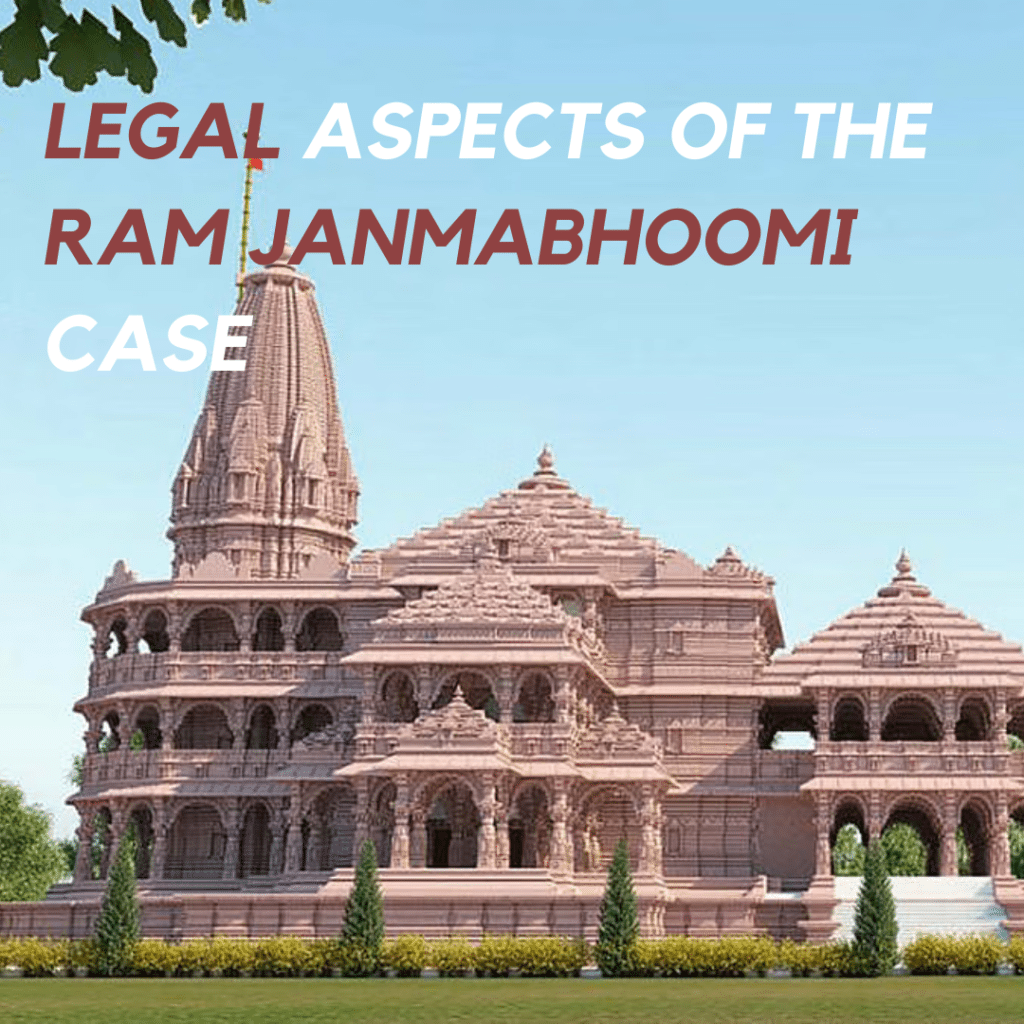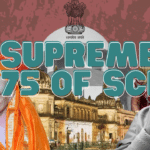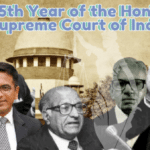
Authored By – Dev Gupta
Table of Contents
LEGAL ASPECTS OF THE RAM JANMABHOOMI CASE
On 22nd January 2024, India and perhaps the world witnessed, quite possibly, the biggest religious ceremony till date. It was the first time that a sort of Mini-Diwali was celebrated since the event happening was similar to that for which Diwali is celebrated. Hindu Deity Lord Ram was coming home to his birthplace. India and Indians rejoiced together after the achievement of such a feat which goes beyond the boundaries of religion, war, culture etc. It was the result of the truth prevailing in the Highest Court of India. It was a victory of the faith that people put in.
BACKGROUND:
The Ram Janma bhoomi conflict has its roots in centuries of communal disputes. However the case was mainly on the standpoint that there stood a Hindu Temple in Ayodhya which, after the ravaging and pillaging of the Mughal Emperor Babur was replaced with a mosque. The dispute came into modern light first when archaeologists and travellers from India and foreign stated that there have been accounts of Hindu people who visited the Holy Site in order to offer prayers to their Deity Lord Ram and that there were statues of Hindu gods buried beneath the mosque. These studies gained much emphasis which made the Hindus of the country agitated. This led to the demolition of Babri Masjid in Ayodhya by the Hindu Activist group – Vishwa Hindu Parishad. The death toll reached a staggering toll of 2000 deaths which included the deaths from riots in 1992 which ensued.
LEGAL HISTORY:
Mentioned above were just the events that have been in the widespread media. Another interesting fact about the whole affair is that officially the court history of the matter has been tracked back to 1885 when Mahant Raghubar Das, the chief priest of the Ram Chabutra filed a suit seeking permission to build a temple in the outer courtyard of the mosque. The suits were dismissed along with the appeals stating that there were no grounds for the petitioner to claim that the land was in their favour. In 1950, the Hindu Side filed suits in Allahabad High Court alleging that the government officials were preventing them from entering the site for worship. The same day an ad-interim injunction was passed to allow sewa pooja. On 19 January 1950, the injunction was modified to prevent the idols from being removed from the disputed sites. The Allahabad High Court dismissed appeals against this order. In 2002, while hearing the Ayodhya Dispute Case, the Allahabad High Court gave directions to the Archaeological Survey of India to carry out scientific investigations and survey the disputed site with Ground Penetrating Technology or Geo Radiology. In March 2003, the Archaeological Survey claimed to have found remnants of a 10th century Hindu Temple. In September 2010, the Allahabad High Court passed the verdict that the parties were joint-holders of the disputed land. In May 2011, the Supreme Court stayed the High Court verdict stating that the judgment was not in the prayers of either of the parties. After a series of events, suggestions and failures of out of court settlements, the matter was finally to be heard by then Chief Justice Ranjan Gogoi, Justices S. A. Bobade, Ashok Bhushan, D. Y. Chandrachud and Abdul Nazeer.
ADVOCATES FOR THE PARTIES:
Mr. Keshav Parasaran led the team of lawyers on the side of the Hindu Litigants. It is said that he would stand in court for 4 -5 hours and that too barefoot since he was, as he said, “fighting the case for Lord Ram” despite being the at age of 92.
On the side of the Muslim Litigants was Mr. Zafaryab Jilani who had also formed the Babri Masjid Action Committee after the order passed by the Faizabad District Court ordering the opening of the locks of Babri Masjid in 1986. Since then, Mr. Jilani was involved in one way or another in pursuing Babri Masjid dispute across various means. Mr. Jilani passed away in May 2021 due to brain haemorrhage and was laid to rest in Lucknow.
THE JUDGMENT:
The Supreme Court in its Judgment stated that the entire 2.77 acres of disputed land be handed over to a trust constituted for the construction of Ram temple. It also order that five acres of total land in a prominent site in Ayodhya be handed over to Muslims for the construction of a Mosque. The Judgment was a unanimous one and is said to be a nigh – impossible achievement for CJI Mr. Gogoi. As taken from India Today, “The judgment is extremely well-crafted given that it is unanimous,” says senior counsel Sanjay Hegde. “A parallel would be the Brown vs. Board of Education case in the United States, in which a nine-judge bench of the Supreme Court of the United States in 1954 unanimously held racial segregation in public schools in the country’s various states as unconstitutional.” One of the major turning points of the judgment was that the Hindu party i.e. Ram Lalla Virajman provided better evidences proving continuous worship in the disputed site. Mainly they were from travelogues such as William Finch’s, who visited India between 1607 and 1611, and Father Joseph Tieffenthaler, who came to the country between 1766 and 1771—which described the disputed site as believed to be the birthplace of Lord Ram and where actual worship was conducted. The Uttar Pradesh Sunni Central Waqf Board had contented the disputed site on the basis of Adverse Possession. They stated that since the mosque, even if built by replacing a Hindu Temple, was built centuries ago and since such a long time had passed, they had perfected their title over the land. The contention was then said to be a fallacy by the Supreme Court since in order to prove adverse possession, the Board would have to then submit evidence that the Hindus had in fact possessed the land which would then collapse the defence of the Board. The judgment, a well-crafted one, touched upon many other aspects of law as well as belief of faiths.
CONCLUSION:
The Judgment since its passing has been criticised as well as rejoiced. Even the Uttar Pradesh Sunni Central Waqf Board has opted not to appeal or review the said judgment. Following the Judgment in 2020 the first stone used for the building of Ram Temple was laid and on January 22nd, 2024 the temple was inaugurated. For some it was victory, but for some others, it was a settlement. Some viewed it as the truth prevailing whereas some saw it as influence of politics over the Supreme Court.
REFERENCE LINKS
A better look at the timeline of events leading up to the Ram Temple:
https://www.aljazeera.com/news/2024/1/22/babri-mosque-to-ram-temple-a-timeline-from-1528-to-2024
Dissection of the Judgment:
https://www.indiatoday.in/india-today-insight/story/from-the-india-today-archives-2019-how-supreme-court-finely-balanced-its-ram-temple-verdict-2491253-2024-01-20





